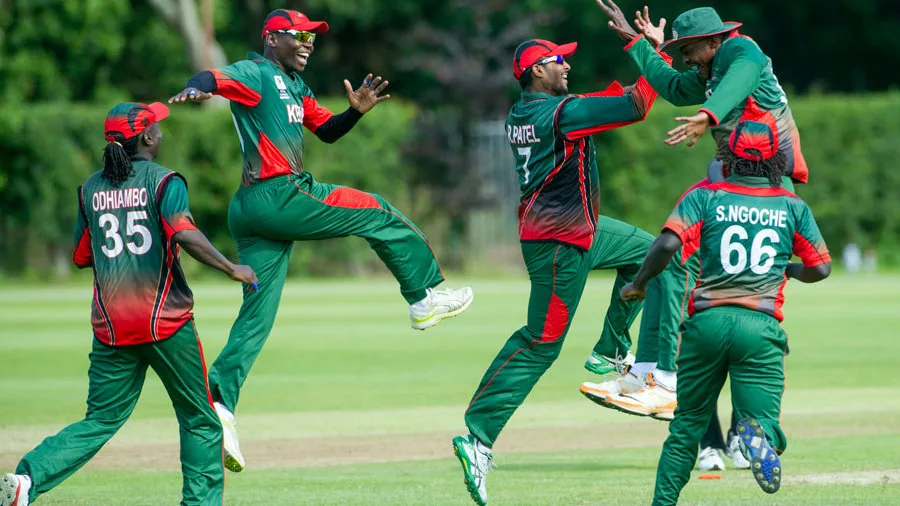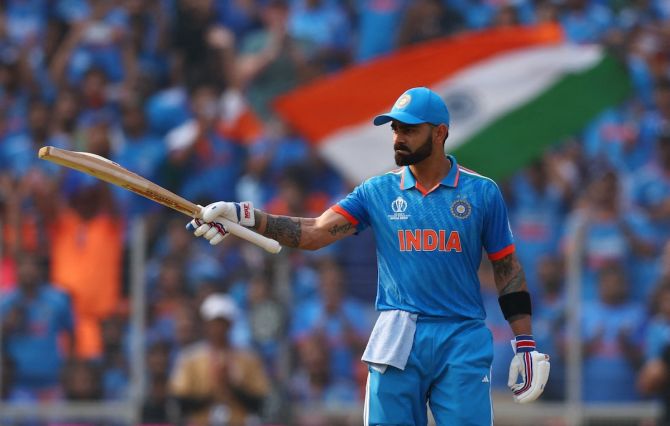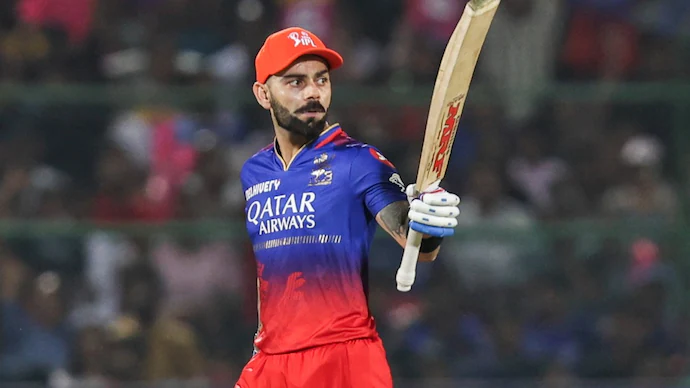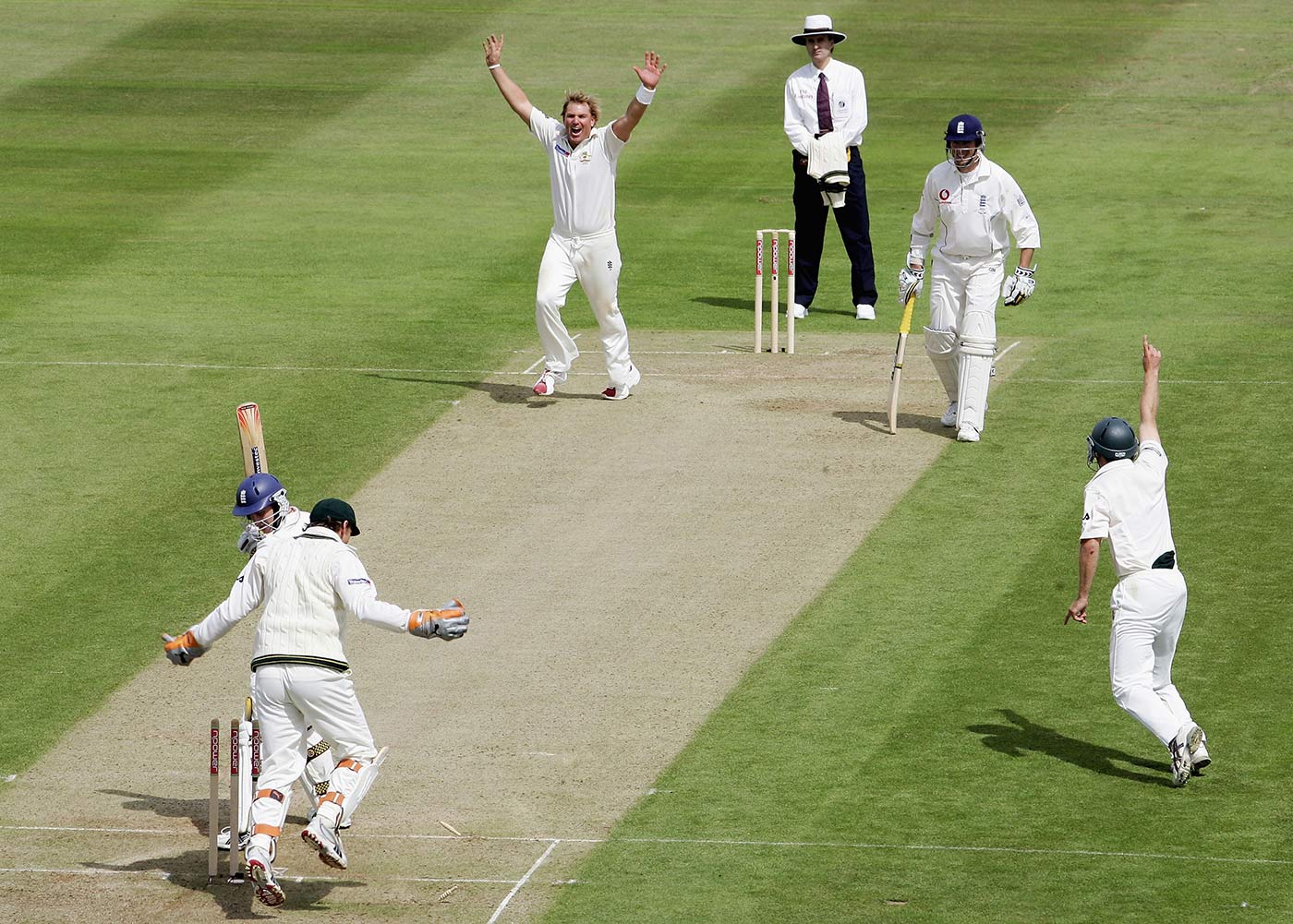Why Kenya Is Not Playing Cricket
![]()
Introduction
Kenya’s cricket team once captured global attention, especially with their remarkable performance in the 2003 ICC Cricket World Cup, where they reached the semi-finals. However, in recent years, Kenya’s presence in international cricket has significantly diminished. Several factors have contributed to this decline, ranging from administrative issues to financial constraints and lack of infrastructure.
Historical Context
Kenya was granted One Day International (ODI) status in 1996 after impressive performances in the ICC Trophy and in the 1996 Cricket World Cup, where they notably defeated the West Indies. The peak of Kenyan cricket came in the 2003 World Cup, with victories over established teams like Sri Lanka and Zimbabwe, and a semi-final finish that exceeded all expectations. This success, however, was not built upon, leading to the gradual decline witnessed today.
Administrative Challenges
One of the primary reasons for Kenya’s cricketing woes is the persistent administrative turmoil. The Kenya Cricket Association (KCA), which was replaced by Cricket Kenya in 2005, has faced allegations of mismanagement and corruption. Frequent changes in leadership and governance issues have created an unstable environment, hindering the development of the sport.
- Lack of Consistency: Frequent administrative changes have resulted in inconsistent policies and lack of long-term planning.
- Corruption Allegations: Reports of financial mismanagement have further tarnished the credibility of the governing bodies.
Financial Constraints
Cricket in Kenya suffers from severe financial constraints, affecting everything from player development to infrastructure maintenance.
- Funding Issues: Unlike cricket powerhouses, Kenya does not receive substantial financial support from sponsorships or the International Cricket Council (ICC). The limited funds available are often insufficient to support a professional cricketing structure.
- Player Salaries: Low wages and uncertain career prospects have deterred many talented players from pursuing cricket professionally, opting instead for more lucrative opportunities.
Infrastructural Deficiencies
Kenya’s cricket infrastructure lags behind that of other cricketing nations, impacting the ability to nurture talent and host international matches.
- Training Facilities: There is a scarcity of quality training facilities and grounds, essential for player development.
- Domestic Competitions: The domestic cricket structure is weak, with poorly organized leagues and tournaments, providing limited competitive exposure for players.
Decline in Performance

As a result of the aforementioned issues, Kenya’s performance in international cricket has sharply declined.
- Loss of ODI Status: In 2014, Kenya lost its ODI status after failing to perform in the ICC World Cup Qualifier. This was a significant blow, reducing their participation in high-profile international matches.
- Ranking Drop: Kenya’s rankings have plummeted in both the ODI and T20 formats, reflecting their struggles on the field.
Comparative Analysis
Other Associate cricket nations, like Afghanistan and Ireland, have made significant strides due to better governance, infrastructure, and financial support. Their progress highlights what Kenya has missed and continues to miss due to its internal challenges.
Efforts and Hope for Revival
Despite the bleak situation, there are efforts to revive Kenyan cricket. Local clubs, former players, and cricket enthusiasts are working to rebuild the sport from the grassroots level.
- Development Programs: Initiatives aimed at nurturing young talent and promoting cricket at the school level are being introduced.
- International Support: Assistance from cricket boards of other countries and the ICC could play a crucial role in revitalizing Kenyan cricket.
Cricketers of Kenya
1. Steve Tikolo
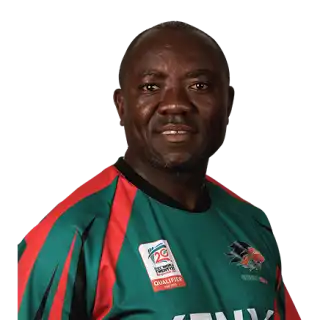
Steve Tikolo is arguably the most celebrated cricketer in Kenyan history. Known for his elegant batting style and effective off-spin bowling, Tikolo has been the backbone of Kenyan cricket for many years.
- Batting Prowess: Tikolo was known for his ability to play both aggressive and anchor roles, making him a versatile and dependable batsman. He has scored more than 3,400 runs in ODIs, including three centuries and 24 fifties.
- All-Round Skills: In addition to his batting, Tikolo contributed significantly with his off-spin, taking crucial wickets in many matches.
- Leadership: He captained the Kenyan team during various phases of his career, including their famous 2003 World Cup campaign, where Kenya reached the semi-finals, a remarkable achievement in cricket history.
2. Collins Obuya
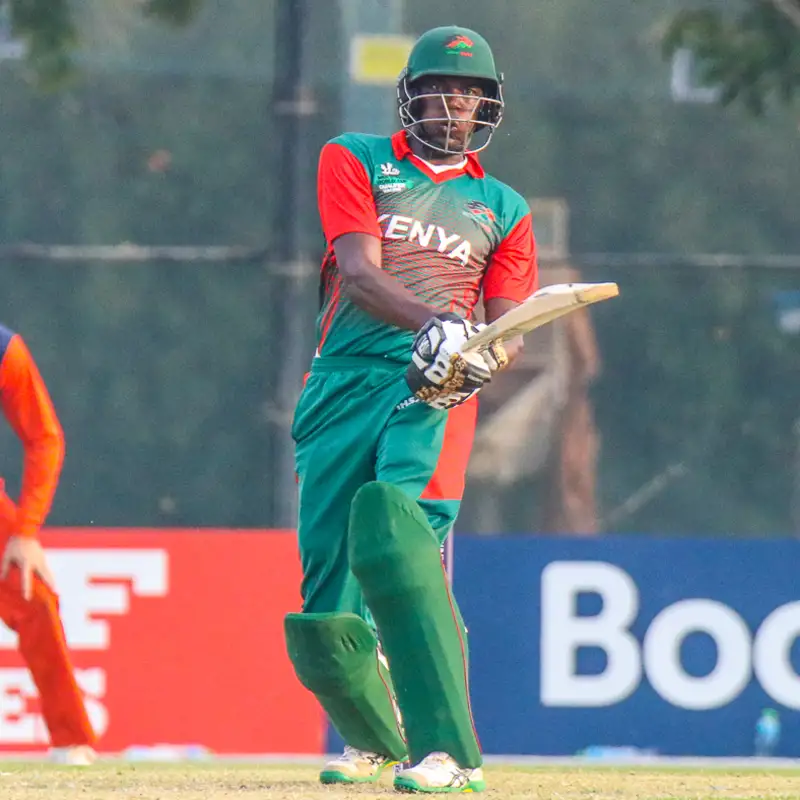
Collins Obuya emerged as a cricketing sensation during the 2003 Cricket World Cup. Initially starting his career as a leg-spin bowler, Obuya later transitioned into a middle-order batsman, showcasing his adaptability and skill.
- World Cup Heroics: Obuya’s standout performance came in the 2003 World Cup when he took 5/24 against Sri Lanka, helping Kenya to a memorable victory and contributing significantly to their semi-final run.
- Batting Evolution: As his career progressed, Obuya shifted focus to his batting, where he played several crucial innings for Kenya. His versatility made him an essential player in the team’s lineup.
- Experience: Over his career, Obuya has been a consistent performer in both ODIs and T20s, providing stability and experience to the Kenyan side.
3. Thomas Odoyo

Thomas Odoyo is one of Kenya’s finest all-rounders, known for his hard-hitting batting and effective medium-fast bowling. His ability to contribute significantly in both departments made him a vital player for Kenya.
- All-Round Excellence: Odoyo has over 2,000 runs and 140 wickets in ODIs, showcasing his dual-threat capability. His consistent performances earned him recognition as one of the best all-rounders in associate cricket.
- Key Performances: Odoyo played crucial roles in many of Kenya’s victories, particularly during the 2003 World Cup. His all-round contributions were instrumental in Kenya’s success in that tournament.
- Awards and Recognition: He has been named ICC Associate Player of the Year, highlighting his impact and importance in international cricket for associate nations.
4. Maurice Odumbe

Maurice Odumbe was a charismatic and talented cricketer who played a significant role in putting Kenyan cricket on the global map during the 1990s and early 2000s.
- Batting and Bowling: Odumbe was an all-rounder known for his aggressive batting and useful off-spin bowling. He played many crucial innings and took important wickets throughout his career.
- Memorable Performances: One of his most notable performances was against the West Indies in the 1996 World Cup, where his all-round brilliance helped Kenya achieve a historic victory.
- Leadership: As a former captain, Odumbe led the Kenyan team with distinction, inspiring many young cricketers in the country.
5. Rakep Patel

Rakep Patel is one of the more recent stars of Kenyan cricket, known for his powerful hitting and useful off-spin bowling. He has been a consistent performer in the middle order for Kenya.
- Batting Talent: Patel is known for his ability to score quickly and play match-winning innings. His aggressive batting style has made him a key player in limited-overs formats.
- Leadership Role: He has captained the Kenyan national team, providing leadership and experience to a new generation of cricketers.
- Impact on Modern Cricket: Patel continues to be an important figure in Kenyan cricket, contributing with both bat and ball in various international and domestic matches.
5. Kennedy Otieno

Kennedy Otieno, also known as “Tiger,” was a talented wicketkeeper-batsman who represented Kenya in international cricket.
- Achievements: Otieno played in multiple ICC Cricket World Cups and was known for his aggressive batting at the top of the order.
- Legacy: He provided stability to Kenya’s batting lineup and was a reliable wicketkeeper behind the stumps.
6. Steve Ouma

Steve Ouma was a proficient wicketkeeper-batsman who represented Kenya in both ODIs and T20Is.
- Achievements: Ouma was known for his safe glovework and valuable contributions with the bat in the lower order.
- Legacy: He played a crucial role in Kenya’s matches against top cricketing nations and was a dependable presence behind the stumps.
7. Morris Ouma

Morris Ouma was an aggressive middle-order batsman who played for Kenya in international cricket.
- Achievements: Ouma was known for his ability to accelerate the run rate and played some crucial innings for Kenya.
- Legacy: He contributed to Kenya’s success in limited-overs cricket and was a respected player in the domestic circuit.
8. Jimmy Kamande

Jimmy Kamande was an all-rounder who represented Kenya in both batting and medium-pace bowling.
- Achievements: Kamande captained Kenya and played in ICC Cricket World Cups, showcasing his leadership skills and cricketing acumen.
- Legacy: He was a valuable contributor to Kenya’s team dynamics and played an important role in their matches against top cricketing nations.
9. Hiren Varaiya

Hiren Varaiya is a left-arm spinner who has represented Kenya in international cricket.
- Achievements: Varaiya has been a consistent performer with the ball, picking up crucial wickets in limited-overs cricket.
- Legacy: He continues to be a key player in Kenya’s spin bowling department and has contributed to their performances in various ICC tournaments.
10. Nelson Odhiambo

Nelson Odhiambo is a medium-fast bowler who has played for Kenya in international cricket.
- Achievements: Odhiambo has been known for his ability to generate pace and movement off the pitch, troubling batsmen in limited-overs cricket.
- Legacy: He has been a valuable asset to Kenya’s bowling attack and has played a role in their matches against top cricketing nations.
Conclusion
The decline of Kenyan cricket is a multifaceted issue involving administrative mismanagement, financial struggles, and inadequate infrastructure. While the glory days of 2003 seem a distant memory, the passion for cricket remains in Kenya. With concerted efforts to address the underlying issues, there is hope that Kenya can once again rise in the international cricket arena. The journey to recovery is challenging, but with the right strategies and support, a resurgence is possible.

